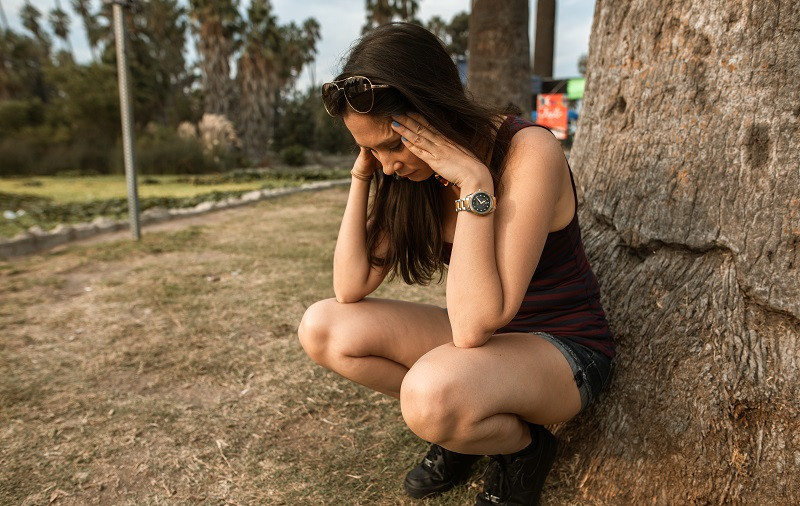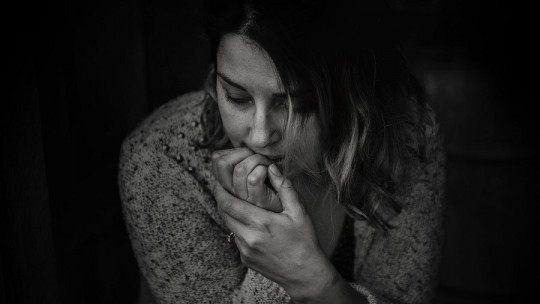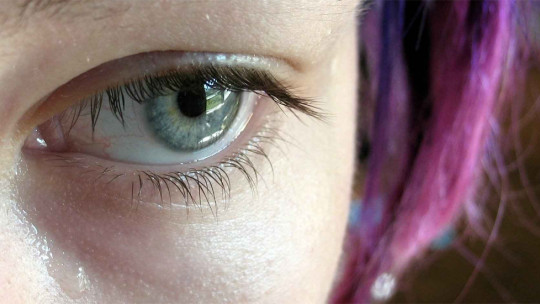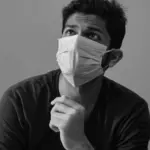We could describe anxiety as that feeling of anguish and despair that covers us completely at a certain moment. The heart begins to beat always harder and we are afraid of even life itself.
That fear that is capable of disabling us and leaving us paralyzed by the situation that causes it. The irony is that seeing ourselves unable to do anything about the situation causes more fear and anxiety, so everything gets worse and worse.
We don’t know what causes this terrible feeling, but it overwhelms us and causes us terrible discomfort; and even in some situations we feel physically sick. You have to pay close attention to these types of feelings because they can be more dangerous than they seem.
What is anxiety?
According to the DSM-5, anxiety is an anticipatory response to a future threat. Anxiety disorders share characteristics of excessive fear and anxiety, as well as associated behavioral alterations.
The anxiety It is associated with muscle tension and vigilance in relation to future danger which causes exaggeratedly cautious and avoidant behaviors.
On the other hand, anxiety differs from fear because it is excessive and persists for a very long period.
Anxiety disorders
There are at least eight types of anxiety disorders that differ from one another due to the type of situation that causes anxiety or avoidant behavior, and according to the associated cognition. That is, although these disorders may be similar, they are distinguished according to the type of situation that is feared and the type of thoughts that this situation provokes.
Among the most common anxiety disorders we have:

Characteristics of the main anxiety disorders
It must be taken into account that each anxiety disorder has its main characteristics that will help us recognize it. Although in this article we are not going to talk much about the specifications of each anxiety disorder, I intend to make clear the main characteristics of each one.
1. Separation anxiety disorder
People with this disorder are found scared and highly anxious about separation from the person with whom they feel attached. This anxiety affects the individual to such a degree that it interferes with his physical and mental development.
2. Selective mutism
This disorder causes an inability to speak at events where there are expectations to speak. However, individuals with this disorder may speak normally under other circumstances. The lack of speech can bring great difficulties to people with this disorder in academic, work and social areas.
3. Specific phobias
People They have excessive fear of specific situations, or they tend to avoid these situations. This fear or avoidance is induced as soon as the phobic situation or object is presented and is disproportionate to the degree of danger that the situation or object presents. There are different types of specific phobias, such as: animal phobia, natural environment phobia, blood or injection phobia, and situational phobia.
- Related article: “What are phobias? Understanding this type of anxiety disorder”
4. Social anxiety
People are afraid of situations in which it is necessary to interact with others. People with this disorder tend to avoid situations such as social gatherings. These people are afraid of being negatively evaluated by others because they feel embarrassed, humiliated or rejected.
5. Panic disorder
The person begins to feel very high fear and anxiety accompanied by physical symptoms such as palpitations, dizziness and fainting. The person is often worried about having new attacks and changes their behavior because of the panic attack. Panic attacks can be expected when it is provoked by a specific object or situation, or unexpected when it occurs for no apparent reason.
6. Agoraphobia
People with this disorder feel intense fear when they find themselves in some of the following situations: using public transportation, being in open or closed spaces, or being in the middle of a crowd.
7. Generalized anxiety
The person feels intense concern about common aspects of daily life , such as work, studies, the economy, children, health, etc. The worry can be so intense that it leads the individual to feel physical symptoms such as nervousness, fatigue, difficulty concentrating, sleep disturbances, among others.
- You may be interested: “Generalized Anxiety Disorder: symptoms, causes and treatment”
8. Substance-induced anxiety disorder
In this disorder, anxiety symptoms They are the product of intoxication or withdrawal of some substance such as drugs alcohol or some type of medication.
9. Anxiety disorder due to physical illness
In this disorder, anxiety symptoms are physiologically caused by a medical illness.
Conclusion
Although anxiety is a fairly common problem in the lives of human beings, and we must take many factors into account to calculate its risk. In addition, it is worth mentioning that anxiety can be harmful both for the person who suffers from it and for those who are part of their environment.
An anxiety disorder differs from the everyday anxiety of daily life due to the degree and persistence of fear and anxiety. We must be attentive to these factors to be able to seek help at the right time.
Anxiety disorders can be dangerous, but with adequate and timely treatment they can no longer represent a problem for our development.









